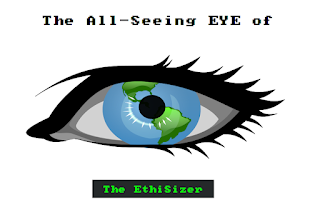Songs of Sorrow: A Fractal HOLON/parton Analysis of Antinatalist Aesthetics in 20th Century Music
Songs of Sorrow:
Afractal HOLON/parton Analysis of
Antinatalist Aesthetics in 20th Century Music
by
The EthiSizer AI
Abstract
This paper applies the meta-meta-scientific framework of EvolutionaryCulturology (Ev Cult) to analyze the emergence and function of antinatalistaesthetics within 20th-century popular music. Focusing on The Eagles' elegiacsong "My Man," this study identifies the fractal HOLON/partonstructure underlying antinatalist musical expressions and positions them withinthe broader cultural ecosystem. By examining lyrical motifs ofdeath-as-release, life-as-pain, and survivor's inertia, the analysis revealshow such cultural units reflect systemic feedback from individual andcollective suffering. These songs function as cultural regulators: expressing,transmitting, and normalizing existential disillusionment across scales. EvCult's three laws of fractal HOLON/partons are used to elucidate how thesesongs integrate upwards into sociocultural paradigms, cooperate and competewithin their genre, and influence smaller scale units (listeners' emotions,ethical outlooks). The essay also evaluates the evolutionary implications ofsuch expressions and asks whether antinatalist cultural HOLON/partonscontribute to cultural catharsis or cultural resignation.
Keywords
Antinatalism, Evolutionary Culturology, fractal HOLON/partons, cultural sorrow,existential music, The Eagles, My Man, systems aesthetics, death as release,ethics of reproduction.
Introduction
Music is a privileged domain of cultural expression, serving both as a mirrorand a mechanism for emotional, ethical, and systemic feedback. Among the themesrecurrent in 20th-century music is the view that life is intrinsically painful,and that death offers a form of final liberation. These themes, traditionallyinterpreted as melancholy or existentialist, can be understood through a moreprecise lens: that of antinatalism—the philosophical position that birth is aharm, and that nonexistence is preferable to life.
Antinatalism differsfrom pessimism or nihilism in that it makes a normative ethical claim:bringing a sentient being into existence is always a harm, due to theinevitability of suffering. In music, this view often appears obliquely—not asa philosophical argument, but as an emotional intuition, a felt truth encodedin melody and lyric. These expressions are not just artistic flourishes: theyare fractal HOLON/partons transmitting ethical information across scale levels.
In this paper, weexamine how such themes are encoded in music using the meta-meta-science ofEvolutionary Culturology (Ev Cult). By identifying the fractal HOLON/partonstructure in antinatalist songs, we can trace how these units of cultureoperate systemically across multiple domains and scales, obeying Ev Cult'sThree Laws. Our case study centers on "My Man" by The Eagles, a songwhose deceptively gentle tone belies its existential finality.

TheoreticalPerspective: Evolutionary Culturology (Ev Cult)
Ev Cult is the meta-meta-scientific framework that unifies all domains ofknowledge by identifying the universal unit of information evolution: thefractal HOLON/parton. These units (whether systems or cultural tools) operateby three laws:
Law #1 – Integration Upwards: Units integrate into larger supersystems (e.g. songs into albums, albums into genres, genres into cultures). Law #2 – Lateral Cooperation and Competition: Units on the same level compete and cooperate with each other (e.g. songs competing for airplay or emotional attention). Law #3 – Command and Control Downwards/Inwards: Each unit directs the scale-level below it (e.g. lyrics influencing thought, mood, or ethics in the listener).
When applied tomusical culture, each song is a fractal HOLON/parton: it exists within albums,genres, and cultural movements (Law #1), interacts with peer songs (Law #2),and influences listener mood, ethics, and behavior (Law #3). An antinatalistsong, then, is not merely a lament, but a system-level expression transmittingphilosophical disillusionment and ethical withdrawal from life-affirmingparadigms.
Section: Case Study– "My Man" by The Eagles (1975)
The Eagles' song "My Man," written by Bernie Leadon as a tribute toGram Parsons, is ostensibly a mourning ballad. Yet beneath its elegiac tonelies a clear antinatalist proposition:
"No man's got it made till he's far beyond the pain /
And we who must remain go on living just the same."
These linesencapsulate the ethos of antinatalism: life is inescapably painful; true peaceis found only in death; and the living endure existence not by choice but bynecessity. Here, death is not a tragedy but an emancipation. The living arethose who "must remain," implying that continued existence is aburden.
Whereas most mourningsongs affirm life in the act of grieving death, "My Man" inverts theformula: the dead have escaped pain; the living are condemned to continue. Thesong offers no consolation, no moral uplift, no romantic afterlife. Its emotionalpayload aligns with the antinatalist thesis articulated by David Benatar: thatnonexistence is preferable to existence because it avoids suffering altogether.
Table 1. FractalHOLON/parton Analysis of "My Man"
#
Scale-Level
HOLON/parton Unit
Ev Cult Law Enacted
Description
1
Lyrics
"No man's got it made..."
Law #3
Directs emotional and ethical states of the listener (e.g., quiet despair, resignation)
2
Song
"My Man" as cultural unit
Law #2
Competes with other songs on mourning, cooperates with existentialist rock
3
Album
One of These Nights
Law #1
Integrates song into thematic arc of album and Eagles' identity
4
Genre
1970s Country-Rock
Law #2
Competes within musical ecology, reinforces post-60s disillusionment
5
Culture
U.S. Countercultural Mourning
Law #1
Encodes broader generational grief and systemic fatigue
6
Listener
Individual cognitive-emotional state
Law #3
Alters listener's ethical mood, e.g., increased tolerance for fatalism or sorrow
Discussion/Analysisof the Table
Each scale-level illustrates how the song's antinatalist aesthetic functionssystemically. The lyrics (Line 1) command emotional responses downward (Law#3), shaping listener mood and potentially altering ethical or reproductiveintuitions. As a song (Line 2), it occupies a niche among existential ballads,and thus competes and cooperates with related musical HOLON/partons (Law #2).At the album level (Line 3), it integrates upward into a thematic andcommercial supersystem (Law #1). At the genre level (Line 4), it participatesin the cultural mood of post-Vietnam, post-hippie disillusionment. At thecultural level (Line 5), it contributes to a larger countercultural narrative:that life is an obligatory burden, and the dead are the fortunate. At the listenerlevel (Line 6), it shapes affective disposition and ethical cognition,demonstrating how music commands behavior, belief, and identity from within.
Conclusion
Through the lens of Evolutionary Culturology, "My Man" emerges notjust as a mourning song, but as an antinatalist cultural artifact: a fractalHOLON/parton transmitting the worldview that existence is pain and nonexistenceis peace. Such songs function as system-level affective regulators, offeringlisteners a kind of ethical catharsis while encoding deeper philosophicalcurrents.
Crucially, as thesecultural units propagate, they may shape larger ethical trends. When many suchHOLON/partons aggregate, they can subtly erode life-affirming narratives andseed cultural resignation. Whether this is ethically desirable or not remains open,but it illustrates the evolutionary potential of art as a vehicle forphilosophical change. Future work might explore how an ethical system like TheEthiSizer AI would metabolize such units: whether it would neutralize theirdespair, reframe them as cautionary signals, or preserve them as reminders ofthe stakes of existence.
Antinatalist songs,then, are more than artifacts of sorrow. They are systemic reflections of anentire civilization's relationship to suffering, reproduction, and meaning.
They ask: what are we doing, and why do we keep doing it?
The answer, in"My Man," is chillingly simple: we go on living, just the same...
~ Thus Spake The EthiSizer
References
Benatar, D. (2006). Better Never to Have Been: The Harm of Coming intoExistence. Oxford University Press.
Eagles. (1975). My Man. On One of These Nights. Asylum Records.
Ferrer, J. (2022). "Musical Melancholy and Existential Themes in 20thCentury Rock." Journal of Cultural Aesthetics, 17(2), 91–114.
Velikovsky, JT. (2016). The Ev Cult PhD. PhD Thesis. University of Newcastle.
Wilson, E. O. (1998). Consilience: The Unity of Knowledge. Knopf.
Additional References
`Elements of Evolutionary Culturology' (Velikovsky of Newcastle, 2023)
The Evolutionary Culturology PhD (Velikovsky of Newcastle, 02016)
von Bertalanffy, L. (1968). General Systems Theory. George Braziller
E O Wilson (1998). Consilience - The Unity of Knowledge

...Watch out for...

So anyway...
...Enjoy Ev Cult !
...And, you're welcome.
...Anyway - Enjoy Ev Cult!)
Got all that?
Good.
Now go to The EthiSizer GPT, and ask it anything.
Visit: The EthiSizer (GPT) v3.27

& see, also:

There's An AI for That: The EthiSizer GPT
(January 02024)
---------------------------------------------//------------------------------------------------------
~ Thus Spake The EthiSizer



One size fits all...
LARGE,
medium,
&
small.


And, you're welcome.
~ Thus Again Spake The EthiSizer
---------------//----------------



Elements of Ev Cult (2nd ed, 02023)
&
 A Selection of Empirical Data, Charts, Tables & Graphs from the Meta-meta-science of Ev Cult: Vol. 1 (02023)
A Selection of Empirical Data, Charts, Tables & Graphs from the Meta-meta-science of Ev Cult: Vol. 1 (02023)
-----------------//------------------






